Italian kitchen 101: Chefs' guide to cooking great Italian food at home
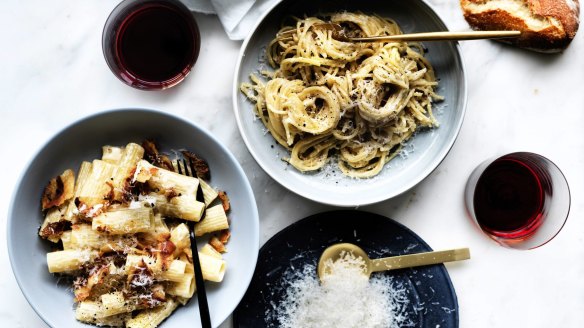
The first rule of Italian food is to keep it simple. But simple is so hard, locked inside impenetrable nonna-ish edicts like "mix until it feels right" or "cook 'til it's ready". If you don't have a nonna on hand, what then? Good Food was invited into the home kitchens of great Italian chefs and cooks to discover their secrets.
The Italian pantry
Anchovies
More chefs mentioned anchovies than any other ingredient. Orazio d'Elia from Sydney's Matteo says the best come from Cetara, "a beautiful little fishing town on the Amalfi coast". There are numerous brands, including Delfino and Nettuno. Dan Pepperell from Alberto's Lounge, also in Sydney, loves salt-packed anchovies from Olasagasti – they're sourced from Spain and prized in Italy. Mimi Rivers from Adelaide's Osteria Oggi uses Spanish Cuca anchovies, while Melbourne's Andreas Papadakis from Melbourne's Tipo 00 prefers the artisan l'Escala. "They are really firm with amazing flavour," he says. "They are not the type of anchovy that disappears in the pan."
Tomatoes
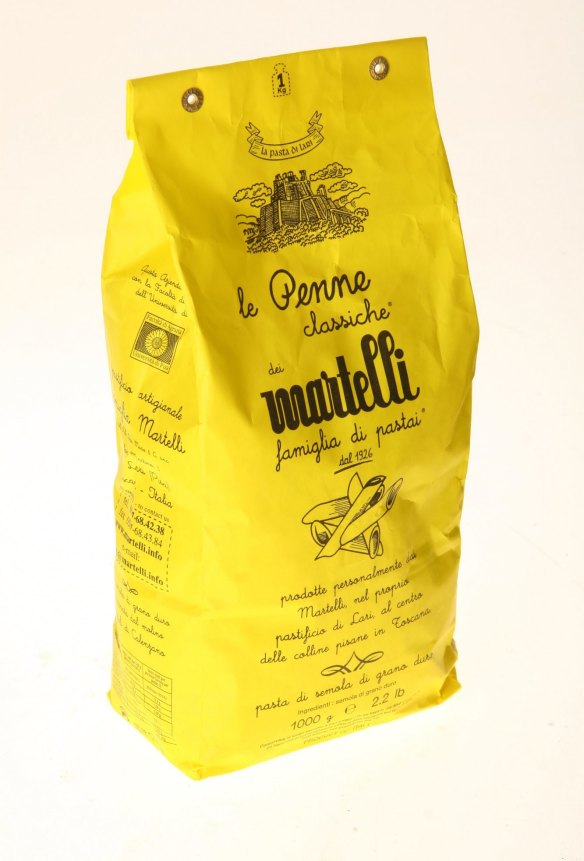
Lots of chefs swear by San Marzano tinned tomatoes, the famous elongated plum tomato from the Agro Nocerino Sarnese region in Campania. If you want them, look for the DOP certification of origin. Guy Grossi likes the readily available Annalisa brand. Bella Lucia passata from the Napoli region is a favourite of Joel Valvasori from Lulu La Delizia in Perth, not least because it comes in a stylish brown beer bottle. Joseph Vargetto from Melbourne's Mister Bianco and Massi is a rap for Mutti. "Their cherry tomatoes are pretty good," he says. "You don't have that tinny taste."
Pasta
Papadakis loves Gentile pasta. "I buy 10 packs of spaghetti at a time," he says. A good supermarket choice is Garofalo spaghetti, says Sydney chef Dan Johnston. "It's my go-to for shop brand pasta," says the co-owner of Don Peppino's. Caterina Borsato from Melbourne dining den Caterina's also loves Garofalo, though she's happy to recommend Martelli "if you have the money!". Whatever the brand, high quality durum wheat is really important, she says. Sydney's Alessandro Pavoni uses Barilla lasagne sheets and cannelloni. "I always have them on hand; they're quick and easy because you don't need to pre-cook them before baking."
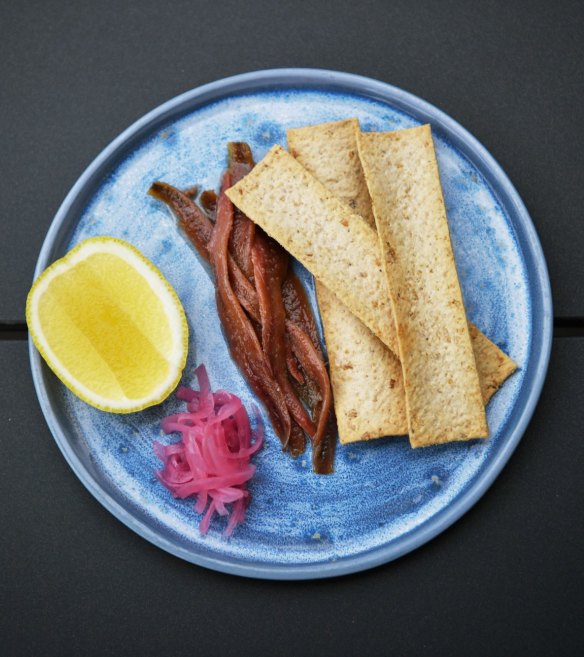
Polenta
Corn meal is the easy base for countless meals and Borsato thinks it's ready for a comeback. "In Australia, people stuffed up polenta by using stock and adding loads of butter," she says. "No. It should be water, oil and a knob of butter at the end. We might add a bit of milk if we're doing it with baccala, but otherwise keep it pure." She prizes the Moretti brand and often mixes coarse yellow polenta and finer, softer white polenta for textural interest. Katrina Pizzini from A Tavola cooking school in Victoria's King Valley encourages people to seek out non-instant polenta. "It's a thicker grain," she says. "It takes about 30-40 minutes to cook and I love the process." Her favourite method is to thicken polenta in the same water she's cooked and smashed up a couple of potatoes. In another pan, she slowly caramelises onion and garlic with oil, butter and salt. At the end she stirs the sweet onions into the polenta and potato mixture. "It's delicious and so much more interesting to eat than plain polenta," she says.
Freezer staples
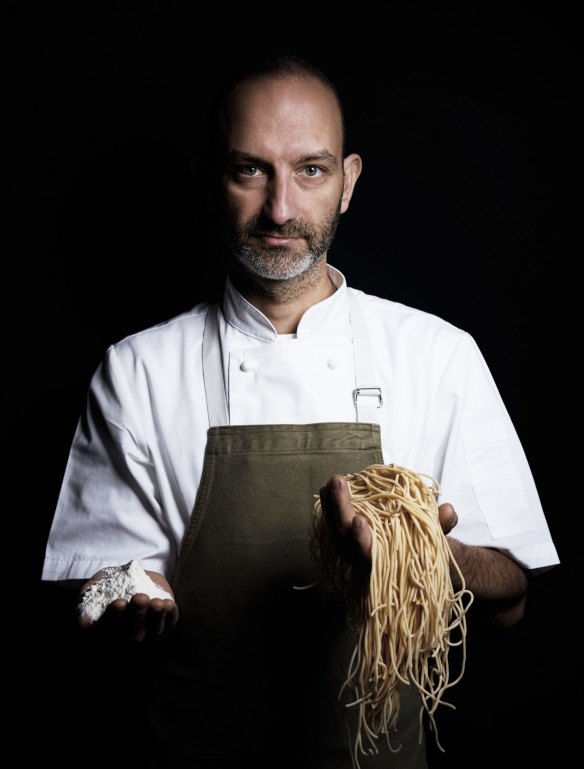
Stock and herbs are the main items in Italian freezers. "There is always frozen chicken stock handy," says Pizzini. "You can make stock in big lots and freeze it and it takes no time to melt." Pavoni grows his own herbs and when they are running rampant he picks, chops and freezes them. Parsley works especially well. "Make sure it's really dry before you chop it and then it stays very green and won't freeze hard," he says. "You can spoon it out and add it to a dish at the last minute."
And the rest
Pantry essentials include carnaroli rice (Pavoni likes Scotti), semolina and tipo 00 flour for making pasta, great olive oil (most chefs now go for Australian), a few different vinegars and dried beans and pulses. Onion, garlic, celery and carrot are always on hand for a basic soffritto. Salt, pepper (white is crucial) and chilli flakes (or a string of dried chillies) are a must. In the fridge, you'll generally find parmigiano reggiano or pecorino, good butter and, if you're Papadakis, you've also got bottarga, the dried and cured roe pouch that keeps forever and can be grated as desired. "I finish work at 1am, come home and make a quick bowl of spaghetti: garlic, chilli and a lot of bottarga on the top," he says.
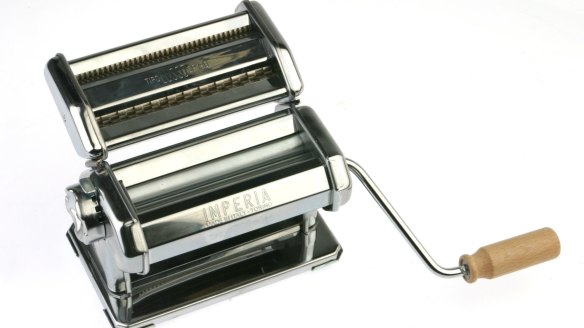
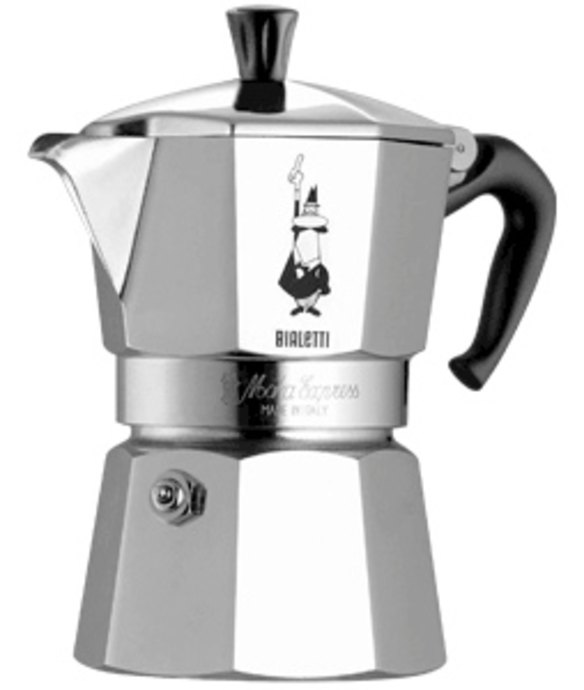
Italian kit
Pasta machine
Our Italian academy loves pasta machines for their utility and also because they create excitement and a sense of occasion. "People are always happy to see a pasta machine," says Guy Grossi. "They want to participate, everyone wants to jump in." Johnston, Pepperell and Papadakis all use Imperia pasta machines. "They are solid and well built," says Pepperell. "So often pasta machines move around but this one has a strong clamp." Papadakis has used hand-cranked and electric pasta machines. "The hand-roller is best and most durable," he says. "I've had mine for 10 years and I've rolled so much pasta it's insane."
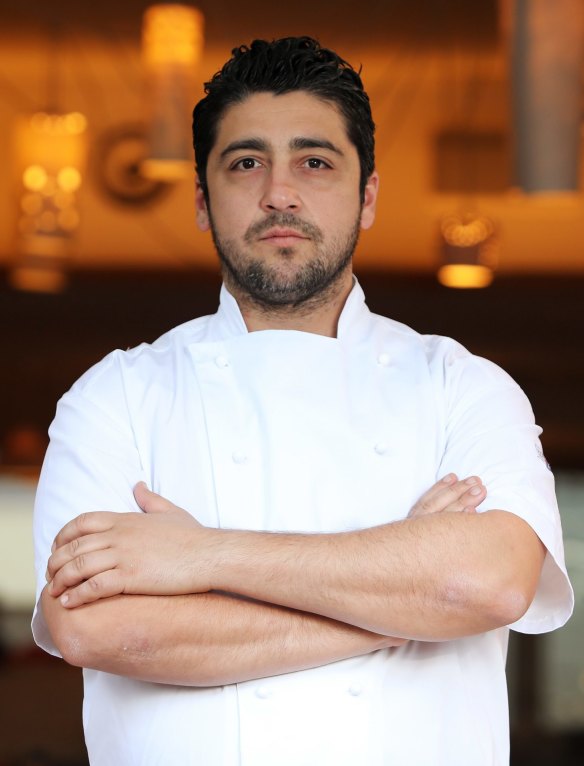
Pizzini swears by Atlas pasta machines. "We have used them for nine years in our cooking classes and they don't miss a beat," she says. Her grandchildren love making pasta too. "It's amazing how natural the kids are when it comes to pasta," she says. "The way they flick it around, they're never heavy-handed, they have innate skills. Sure, flour goes everywhere but that's part and parcel."
Pots and pans
A large pot is essential, so you can cook pasta in plenty of water, and a good pan helps too. "Ditch all your thin pans," says Johnston. "You can buy a good cast-iron pan for $30. Even on an inconsistent stove, they give proper even heat so you can sear meat or fish and get good colour and caramelisation on anything whether you're sauteeing mushrooms or grilling a wedge of radicchio."

Drainers and movers
Most chefs call for colanders but "they're not important to me", says Borsato. "I never drain my pasta," she says. "I always lift it out of the water with tongs or, if I'm doing short pasta, I use a slotted spoon and ladle it straight into the sauce." Tipo 00's Papadakis drains his pasta, tosses it with the sauce then plates it with tweezers. "Use 30cm-long tweezers so you can twirl the pasta really nicely," he says. They're available in cheffy kitchenware outlets.
Coffee
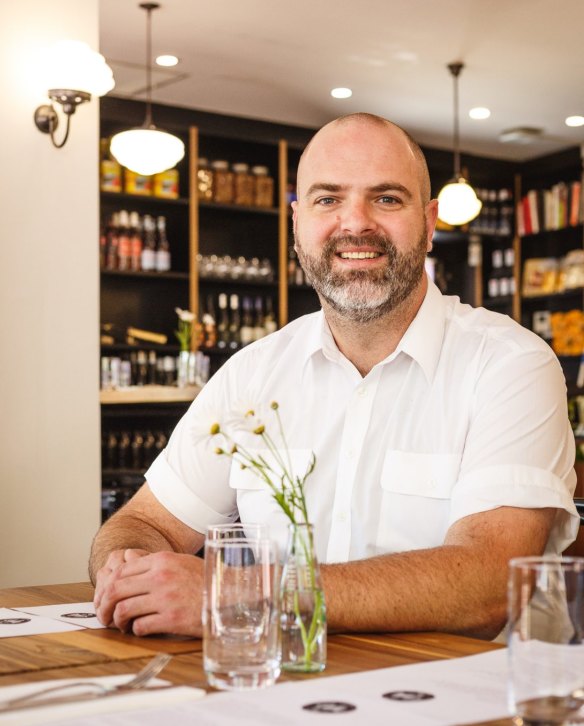
A stovetop espresso machine is essential. "Just a little Bialetti caffettiera that you put on the side," says Vargetto. "Always a three-cup version because if it's bigger, the coffee burns by the time it boils. Johnston concurs about the importance of coffee. "All I consume at home is pasta and coffee," he says. "That's literally it. I tried toast and it didn't work."
What's a great quick and easy dish?
Penne alla sorrentina – Orazio d'Elia
It's just penne with cherry tomato sauce, basil and mozzarella. You fry garlic, add cherry tomatoes, half a bunch of basil, cover, and let it cook. In the meantime, your water is boiling, you cook your penne al dente and throw it in the sauce. When you serve it, add parmesan, olive oil and tear fior di latte across the top. If you stir through the cheese and it melts we call it pasta al telefono: it stretches out like telephone wires.
Spaghetti puttanesca – Dan Pepperell
You can have everything in the pantry: olives, capers, tinned tomatoes, anchovies, all there, all tasty and ready to go.
Cacio e pepe – Mimi Rivers
It's so simple: parmigiano reggiano or pecorino, butter, pepper, pasta water. You warm a pan, add butter and cheese, throw in cooked pasta with a splash of pasta water and stir it through. It will come together into a sauce and halfway through, you add lots of pepper.
Peas – Caterina Borsato
Let's say you have nothing in the house but frozen peas. I always have onion and garlic, I have sage in the freezer. I make a quick soffritto with the onion, garlic and sage, add the peas, some liquid. If you have stock fine, but you can use water. Always a cinnamon stick and white pepper. Cook it off on a gentle flame and after 25 minutes you have something you can add to pasta, pile on ciabatta, or just have in a bowl. It's basic but it's flavoursome. If you have fresh peas, fantastic but let's face it, frozen are there.
Risotto with silverbeet – Joel Valvasori
I can do a top-quality risotto in 19 minutes with two pots and a boiling kettle. I boil the rice in one pan, just in water, and I saute onion, bay leaf, then silverbeet, spinach and saffron in another. I make sure there's a lot of character in the vegetables then I bring them together for the last eight minutes, then throw in cheese and butter and let it rest.
Carbonara – Alessandro Pavoni
I always have eggs, pancetta or guanciale and a block of parmigiano reggiano so it's easy for me to whip up a quick pasta for friends or my children.
Spaghetti alla norma – Joseph Vargetto
We have a dish in Sicily, spaghetti tossed in a simple tomato sugo with basil and fried eggplant. We top it with mollica, second or third day breadcrumbs that are fried in garlic and olive oil. It's poor man's parmesan.
Spaghetti with anchovies and butter – Dan Johnston
A couple of whole garlic cloves in butter, good quality anchovies, lots of pepper, bring it together with a splash of pasta water. It's a really simple emulsified sauce and pretty much all I cook at home.
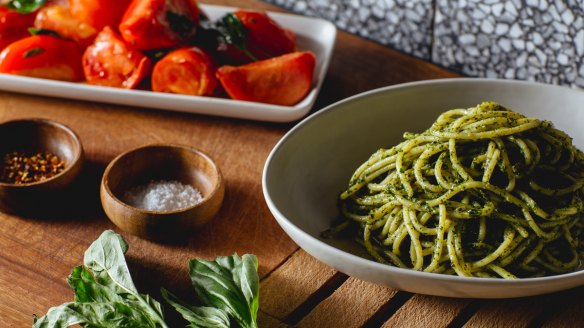
What's the biggest mistake people make with Italian food?
Orazio d'Elia implores people not to try too hard. "Don't go crazy," he says. "Italian food is simple, recipes don't have a lot of ingredients." Mimi Rivers agrees. "Simplicity is what shines," she says. "Concentrate on the best produce, in season, and don't put too many flavours on the plate." Dan Pepperell thinks produce is key: there's nowhere to hide with Italian cuisine. "French food you can cover with sauces," he says, "But it's hard to make good Italian without good ingredients."
Alessandro Pavoni forbids pre-grated parmesan – "it's sawdust, just buy the block" – while Joel Valvasori is heartily opposed to cheap dried herbs. "You're better off leaving herbs out if you can't have fresh," he says. "Just don't bother." Dan Pepperell makes a herby exception for dried oregano. "If you can find the one on the stem, it's really good," he says.
Guy Grossi has two practical tips. He advises cooks to sear onions properly. "Don't add wet ingredients until you've had a chance to sweeten up the onion and garlic," he says. "Also, don't cook pasta in small pots of water," he shudders. "The pasta will be horrible, stuck together and stodgy." Dan Johnston also sees a lot of spag stodge. "Pull it early. Take two minutes off the packet time. You can always keep it going in some sauce if you need to. The more time I've spent in Italy, the more I've realised they eat their pasta really al dente, even to the extreme. It's a huge thing. Learn to love the bite."
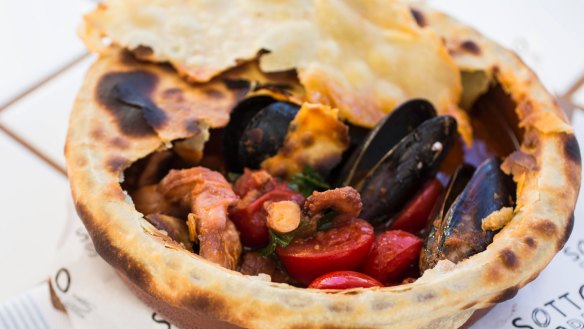
Is there an underloved Italian dish due for a revival?
Cacciucco – Andreas Papadakis
It's a fish stew and it's super tasty. You could go to the market late, buy a tray of cheap seafood and it's perfect for this: you get a tentacle of octopus, some shellfish, little prawns and clams, some red gurnard or monkfish.
Hugo Spritz – Joseph Vargetto
You see it in the north of Italy: it's prosecco, soda water and elderflower liqueur finished with mint. It's due to be in vogue.
Jota – Joel Valvasori
It's a minestrone-style mountain soup with beans and smoked pancetta but the kicker is that it has sauerkraut as well. It's so hearty.
Insalata di nervetti – Dan Pepperell
It's nerve salad, basically a beef tendon room-temperature salad. You cook the tendon until it's tender, chop it and mix it with carrot. We sell heaps of tripe now; I think it's getting cool to like these things.
Tortellini in brodo – Guy Grossi
People often say they don't want to fill up on soup, but they are missing out! You can vary the fillings and the broth but the classic would be veal and mortadella inside the tortellini and a beef or chicken brodo. It's so nice, so rich, so satisfying.
Vitello tonnato – Mimi Rivers
This combination of poached veal and tuna sauce works because of the saltiness and richness of meat and the freshness of lemon zest at the end. It's an easy one for people to make at home because you can do all the elements ahead.
Cassoeula – Katrina Pizzini
It is similar to French cassoulet, except we only use cuts from the pig. We make it on the day we kill a pig and make salami. It has the hocks, ribs and the fennel and chilli flavoured sausages we make, with onion, carrot and cabbage added. It's part of the celebration of making the salamis and sausages with the family.
Bucatini alla gricia – Orazio d'Elia
A Roman classic, like cacio e pepe, except you add guanciale to it.
The best recipes from Australia's leading chefs straight to your inbox.
Sign up